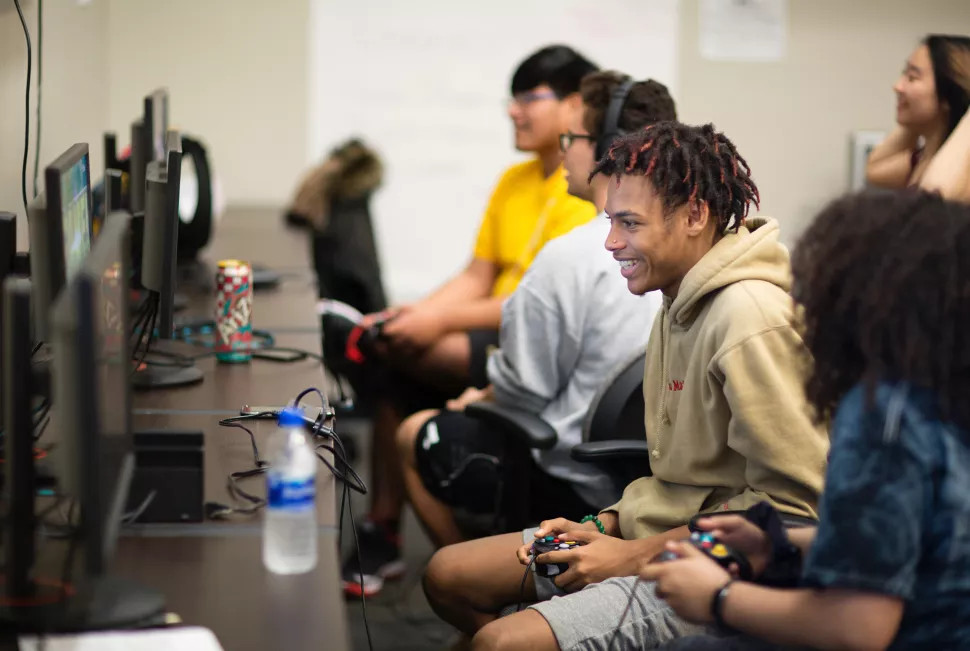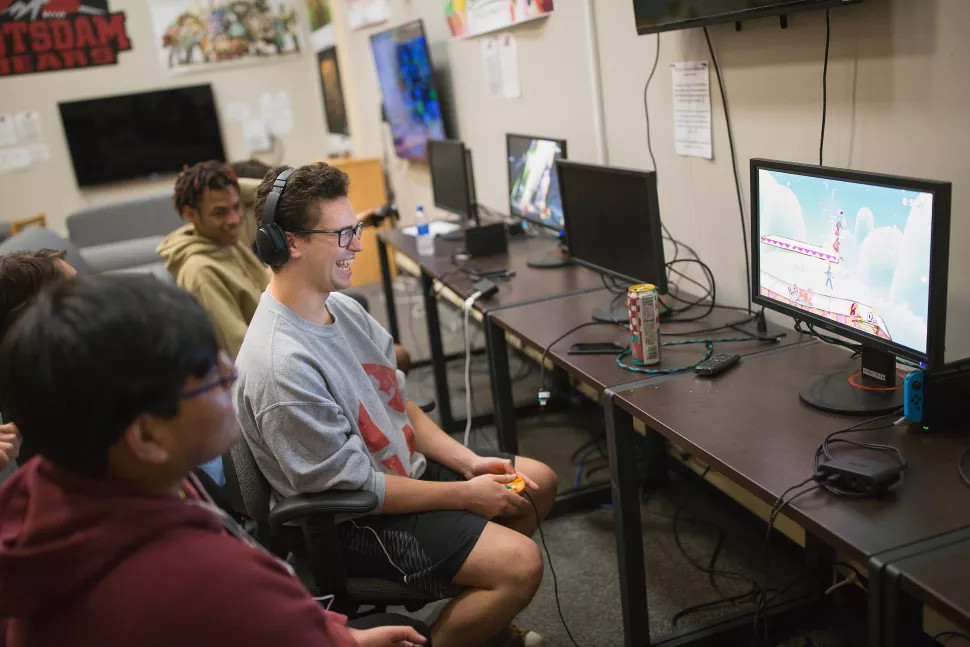How It's Done: Creating An Esports Program
SUNY Potsdam's programs treats esports as real sports

Curious about esports and what it can offer your students? We chat with Dr. Anthony Betrus, Professor of Educational Technology and Management at SUNY Potsdam and presenter of TED Talk “Esports are Real Sports,” about how to create a successful esports program.
Who: SUNY Potsdam esports Team—Watch on Twitch
Where: State University of New York at Potsdam, NY
What: Esports Builds Teammates and Content Creators
SUNY Canton’s winning program paved the road for us and our president, Kristin Esterberg, has been amazingly supportive and committed to helping us out. I’ve been teaching "Teaching and Learning with Simulation and Games" since 1995—it was my primary research area, so it was a natural fit. It took off quickly. I’d heard stories, and ”You’ll be amazed how many join in!” Sure enough, that’s what happened.
I scared them a bit at first. “If you're going to do this you can't go halfway. This isn’t sitting on the couch gaming. Esports is different, you're committing to being good.”
We had a motto: Commit. Persist. Learn. I expected to lose everything the first semester, like any new organized sports team, it would be a development year. You lose and you learn. I didn't expect them to be as good as they were. Maybe it was creating a positive culture, a bit of good fortune, but we got all the way to the quarter finals (lost to the winner) of the ECAC (Eastern College Athletic Conference) Super Smash Brothers. Super exciting.
Tools and ideas to transform education. Sign up below.
Our focus is on empowering students to take control. Not a top down instructor-driven thing, esports is a great opportunity to practice letting them fail forward, encourage growth. Be involved. Just like most other coaches, the adult in charge of the program becomes a bit of a parent, becomes a role model and a shoulder for the kids. We’re truly a team.

Positive Results
First we focused on competing—“Commit. Persist. Learn.” Having laid the groundwork and achieved while competing, this semester we are focusing on streaming and content creation. Being a content creator is a huge part of esports and it’s our theme for the whole program now: “Perform. Create. Inspire.“ We’re getting everyone on the microphone, editing video, setting up equipment, managing social media.
We’re also developing a dual enrollment course in content creation that can be taught online, helping high schools learn the skills with a media and digital literacy focus.
Biggest Challenge
There's definitely a learning curve with streaming. We've had lag with our wifi, so we use wired connections, but even then there can be stuttering, which can be catastrophic. There are so many settings! Infinite settings. Audio/Visual needed to be synched, our digital capture card might wonk in and out, trying to split video so it can be viewed locally and on the stream simultaneously.
Right now, the esports Rule Set needs a lot of work when it comes to consistency. We've ran into issues where the rules are unclear, or some teams enforce the rules one way while others use another. Then there's all the ways people can get around the rules—where rules aren’t explicitly written, but it is understood what you shouldn’t do but there's no referee to call them out. I give the ECAC a lot of credit. They've partnered with LeakSpot to manage things and they are very responsive and adapting very quickly.
Esports is in its infancy so these things will get ironed out.

Pro Tips
I did a TEDTalk to kick things off, a heart-to-mind thing. My tip is to watch “Esports is Real Sports.”
Start with the president right down the reporting structure through athletics so everybody can gain a rudimentary understanding of what esports truly is. Don’t create a second-class citizen. Support it as you would any another club sport (if that’s what it is, some schools categorize it as varsity). While there is some crossover with sport kids, many of these kids never would have been varsity athletes and they are used to the school system not valuing what they do. They are expecting the administration and the adults in the organization to not get it, to not understand what they can offer. You have to overcome that, you have to be engaged. It’s not difficult; talk to them, learn a little, show interest and be positive.
There is a lot of ignorance about what esports is. Trust that it's valuable. After that, amazing things can happen.
Finding Funding
Residence Life kicked in enough money to get the gaming lounge started (we made it accessible to all students in order to qualify for those funds), we did a kickstarter-like GiveCampus campaign to raise money for jerseys, and student government pitched in funds to cover some of the equipment.
We used an existing Final Cut Pro subscription, and when our soundproofing was off, took an Amish clothes rack and covered it with a thick SUNY Potsdam blanket. Junkyard engineering—you do what you can without a budget.
What's Next
As part of our developing Digital Content Creation course, we are making little animated ‘leaders,' ready to cheer the team on. Using Oculus Medium 3D Creation, we’re making animated mascots. Bringing those to a program called Mixamo, you can tap 8-9 critical joints (elbow, hips, wrist, etc) and attach movement, make it dance. Between those and Photoshop 3D, there are infinite number of dances so if we win, they can come out and do a little celebration dance, a different movement if we lose.

Tech Tools
- Super Smash Bros./Fortnite/League of Legends/Overwatch
- Clips Videos
- Streamlabs OBS
- Final Cut Pro
- Adobe Photoshop
- Oculus Medium 3D creation
- Mixamo
- Twitch
- Youtube
Sascha has nearly two decades of experience as a freelance journalist writing for national magazines, including The Washington Post, LA Times, Christian Science Monitor, National Geographic Traveler, and others. She writes about education, travel and culinary topics.

